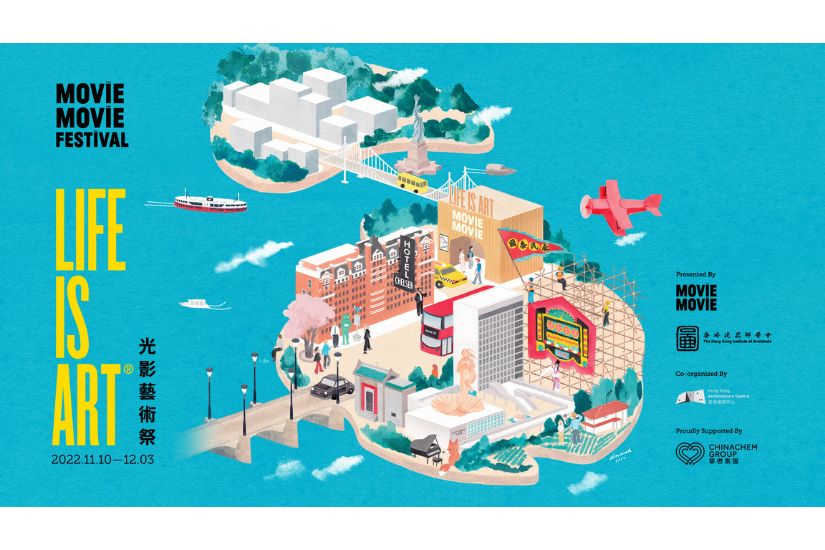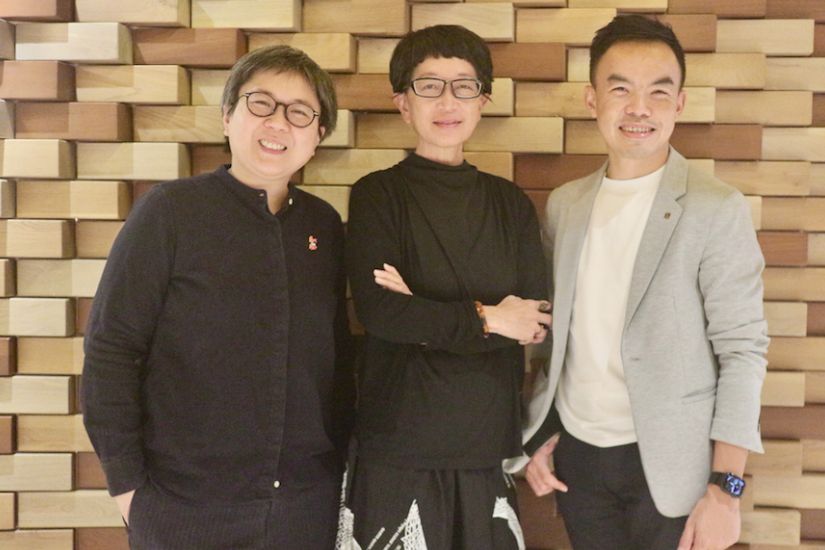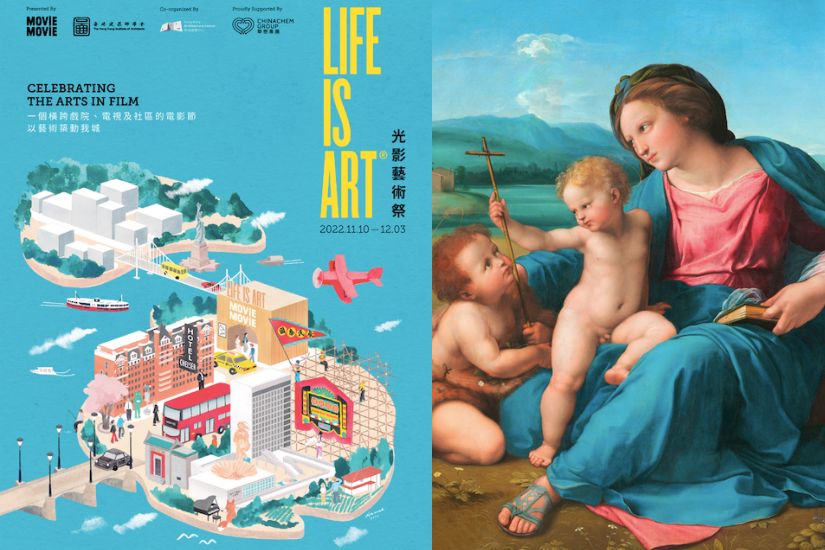Architecture, art, and film, three seemingly independent forms of creation, actually have intricate relationships behind them. This year, MOViE MOViE celebrates its 10th anniversary and collaborates for the first time with the Hong Kong Institute of Architects to host the “MOViE MOViE Life is Art Light and Shadow Art Festival” with architecture as the theme. The program brings an exciting lineup of film screenings, allowing everyone to explore the charm of architecture through light and shadow!
We take this opportunity to invite Allen Poon, Honorary Secretary of the Hong Kong Institute of Architects and Chairman of this year’s program committee, to share with us the exciting cross-disciplinary collaboration, the relationship between architecture and film, and the most anticipated highlights!

ZTYLEZ: What special significance does the collaboration between the Hong Kong Institute of Architects and MOViE MOViE have this year?
Allen: “Life Is Art Summer Art Festival” started many years ago when Joycelyn from MOViE MOViE approached me to do some post-screening sharing on the architectural aspects of films. Since then, every edition has continued to invite more architects and friends from various fields to share at the art festival, including the co-chair of this film festival, Corrin Chan. Later on, we organized more diverse screening events, including a charity screening held for the Hong Kong Architecture Centre.

中:電影節聯席主席陳翠兒 Corrin Chan;
左:MOViE MOViE 總經理 蔡靄兒 Joycelyn
Actually, many of the architectural films in Life Is Art are quite popular among fans, often being the first to sell out at film festivals. Several years ago, both Joycelyn and I felt that there weren’t many opportunities to showcase architectural films in Hong Kong, so we thought of organizing a summer art festival with architecture as the theme. This year marks the 65th anniversary of the Hong Kong Institute of Architects, and they have planned a series of public events under the theme “Architecture for People” to celebrate. Screening films would be a great opportunity to bring architecture closer to the public, leading to the collaboration between HKIA and MOViE MOViE. This year also happens to be the tenth year of Life Is Art, making this film festival a valuable and unique opportunity that we hope will be a memorable one.
ZTYLEZ: What do you think is the relationship between movies and architecture?
Allen: Many architects enjoy watching movies. In addition to the story content, architects love to study filming techniques, framing skills, art direction, etc. It seems that filmmakers and architects both have some core values that they appreciate. I think it actually has a lot to do with the creation of “space.”
Architecture is the stage of life, and movies are the stories that happen on this stage. Movies tell stories through images, and in fact, architects, when designing, are similar to directors in envisioning a film, creating sketches to simulate the composition of each space. In a architectural project that focuses on the quality of space, architects play a role in the design process similar to that of a film director, leading a team to create with limited resources. Directors tell stories in the context of the city, while architects construct the stage of life, allowing different stories to unfold in the future.
In order to bring the most exciting films from around the world to local audiences, members of the Hong Kong Institute of Architects formed a film festival preparation team early in the year, drafting a series of film lists covering both mainstream and niche audiences; MOViE MOViE also dedicatedly went to the Milan Film Festival and Cannes Film Festival to collect the latest films of the year. In other words, the films that are now ready to be shown have all been carefully selected.
The following will introduce some of the highlights selected by editors and Allen among many excellent works:
Martin Scorsese’s poetic production “Dreams of Old Walls – Chelsea Hotel”
Madonna, Andy Warhol, Bob Dylan, Patti Smith, Janis Joplin, Pink Floyd, and others have all been legendary guests at the Chelsea Hotel, where they each created a wealth of timeless music, visual, and literary works. It makes one wonder: can architecture inspire creativity? Why can a hotel on a Manhattan street become the “cradle of art” that attracts a community of artists? This documentary produced by Martin Scorsese takes us through the poetic and artistic space that has been imbued with meaning for over a hundred years.
Uncover the secrets of extraordinary artists during the Renaissance period “Renaissance Masters: The Secrets of Raphael”
Raphael (1483-1520) is one of the greatest artists in history, hailed as one of the “Three Masters of the Renaissance” along with Leonardo da Vinci and Michelangelo. Not only a painter, he also dabbled in architecture and various arts, sparking an artistic revolution during the Renaissance period. This film not only allows us to appreciate the brilliance and grandeur of Raphael’s art, but the award-winning production team also showcases the daily life of this outstanding painter in his studio in Rome, giving people a fresh understanding of this mythologized giant of the Renaissance.
Step into the world-renowned art museum “The Day and Night of the Uffizi Gallery”
The Uffizi Gallery houses numerous artworks from the Renaissance period, which are still renowned to this day. The director of this film will lead the audience into this ancient art gallery, revealing its complex and little-known inner workings, as well as allowing them to admire unpublished masterpieces. In addition to immersing themselves in the works of 16th-century artists such as Botticelli, da Vinci, and Caravaggio, viewers can also work alongside the gallery staff.
Local documentary production “Feng Tiao Yu Shun” “Xi Peng”
Director Cheuk Cheung continues to use images to document the folk customs and culture that have been passed down in Hong Kong for a hundred years, from opera actors and opera stages to temples, uncovering little-known stories of traditional culture and art in Hong Kong, shedding light on local history. “Feng Tiao Yu Shun” observes the daily behaviors of water people, islanders, and urban residents in the Tin Hau Temple, allowing the audience to reexamine traditional culture. “Opera Stage” documents the master craftsmen who build the opera stage, the villagers who participate in the activities, and the actors who perform martial arts opera, showing the significance of the opera stage from their perspectives, and witnessing the rise and fall of an opera stage.
Harry Potter Voldemort plays the most powerful legendary character in New York “City Builder (NT Live)”
The film tells the story of the urban planning and development of Manhattan in the 1960s, with Harry Potter’s “Voldemort” Ralph Fiennes transforming into “city-building maniac” Robert Moses. Over 40 years, he single-handedly built parks, bridges, and a comprehensive transportation network in New York State, completely modernizing the city. Although his iron-fisted methods were very effective, they also sparked a lot of controversy and criticism. Is it more important for a perfect city to progress to have capable and visionary leadership, or is the opinion of stakeholders more important?
Visit the most rugged and wild architecture of the 1960s “Barbican – The Rugged City”
The Barbican Centre in London, which combines world-class art venues and residences, is a classic example of British brutalism. Many architects are drawn to its simple and rugged aesthetic, while on the other hand, the general public may not appreciate this aesthetic filled with concrete. Architects Ila Bêka and director Louise Lemoine were invited to live in the Barbican for a month, in order to compare the differences in architectural aesthetics between the architectural elite and the general public.
Milan Design Film Festival premiere work “Two or Three Things About Architects”
Many architects delve into furniture and different design fields, and a group of masters from the architecture, fashion, art, and design sectors engage in remote dialogues in the post-pandemic era, discussing the challenges brought by climate change crisis and urban-rural redistribution. This film explores architects’ insights and challenges in their core architectural practice as well as in product design, furniture, art creation, and other fields.
More movies in theaters: Click here
Image source and learn more: MOViE MOViE, Hong Kong Institute of Architects

